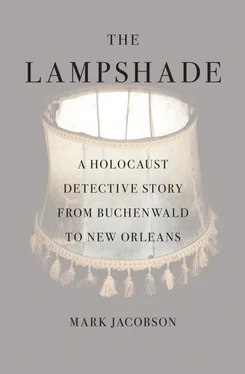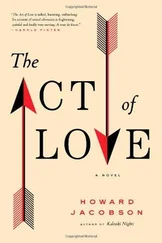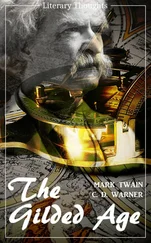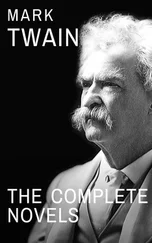This was the background (Lipstadt’s book had just come out) going into the aforementioned Phil Donahue Show . From the start, Bradley Smith, a former media spokesman for the Institute for Historical Review, tried to set the parameters of the discussion. A motorcycle-riding California libertarian of the old school, Smith wanted to talk only about the gas chamber issue, ignoring the rest of the Holocaust, as if these things could be separated. But Donahue, recognizing the public fervor surrounding the show—it was one of the very first appearances of someone who might be construed as a “Holocaust denier” on national TV—refused to restrict the debate. The topic was too emotional, too juicy to follow any set procedure. Another, younger, denier, David Cole, showed a tape “proving” that the gas chamber doors at Auschwitz opened out, not in, thereby supposedly showing that the victims could have escaped the room if they wanted. This “evidence” was unconvincing and boring to boot, but Cole offered the irresistible tabloid feature of being Jewish. Here was something to grab hold of, that whole self-hating trope, and Donahue pounced, asking, “Were you bar mitzvahed, David?” [16] David Cole was widely attacked by militant Jewish groups following his appearance on the Phil Donahue Show . In an article entitled “David Cole: Monstrous Traitor,” the extremist Jewish Defense League, referring to Cole as a “low-life beast worse… than the Julius Streichers and Joseph Goebbels” and an “evil monster” who “does not deserve to live on this earth,” offered “a monetary reward” to anyone supplying his correct address. In 1998, supposedly in response to JDL pressure, Cole recanted his “revisionist” position and has rarely been heard from since. It is “intimidation” like this, according to Denier Bud, that has sapped much of the energy from the “revisionist” movement. But there are unmistakable signs that the “movement,” at least in its “scholarly” application, has been fading away since the Deborah Lipstadt—David Irving lawsuit case. In a January 9, 2009, article, Mark Weber, the longtime head of the Institute for Historical Review, publicly asked, “How Relevant Is Holocaust Revisionism?” Weber wrote: “Over the past ten years, sales of IHR books, discs, flyers and other items about Holocaust history have steadily declined, along with inquiries about Holocaust history and requests for interviews on this subject.” This was countered by a more than equal rise in sales of items dealing with “Jewish-Zionist power, the role of Jews in society, and so forth.” It was Weber’s conclusion that “In the real world struggle against Jewish-Zionist power, Holocaust revisionism has proved to be as much a hindrance as a help.” Asked if this signaled the end of formal Holocaust denial, Denier Bud said, “Well, maybe I’m going to be the last man standing.”
Things went off the rails from there, as Smith, frustrated he hadn’t been able to present his gas chamber case, took exception to the idea that most people thought the Holocaust involved “nobody but the Jews.” Lots of people were killed in World War II, Smith said. Why did we have to spend so much time on this one particular segment of humanity? What about the Germans; weren’t they victims, too? Not every German was a Nazi, yet they died, too, in the millions. Wasn’t there “something vulgar about lying about Germans and thinking it is proper”? Smith said. “For example, it was a lie that Germans cooked Jews to make soap out of them. It was a lie—”
Shermer, the skeptic, interrupted at this point. “No, not a lie. It’s a mistake.”
It was an honest if inelegant attempt on Shermer’s part to set the record straight. By 1994, much of the soap research was in. You could understand why victims believed it; sitting in a hellish camp, surrounded by so much death, anything seemed possible. But it wasn’t so. Scholars were very much in agreement on that. History was not the product of a snap judgment, Shermer contended, but rather an ongoing process of discovery. The fact that mistakes could be made did not change the overall picture. There were some questions that might never be answered.
Had this situation been unfolding in a university seminar, Shermer might have been able to carry through on discussing the problems of understanding the past. But this was not a classroom and there was no time, because right then, one Judith Berg, an Auschwitz survivor sitting in the front row of the studio audience, rose to say, “ It was true! They made lampshades and they cooked soap! That’s true.”
Shermer turned toward Judith Berg. “Excuse me,” he said, defending rationalism, “but historians make mistakes. Everyone makes mistakes.” He attempted to make his case about “refining our knowledge,” but Smith, a raconteur of such moments, saw his opening.
“Ask why they’re doing this to this woman,” Smith demanded. “Why have they taught this woman to believe that Germans cooked and skinned—”
Judith Berg jumped out of her chair. “I was seven months in Auschwitz! I lived near to the crematorium as far as I am from you. I smelled—you would never eat roast chicken if you were there—I smelled—”
“Let’s get to the bottom of one thing,” Smith interjected. “She says soap and lampshades. The professor says that’s mistaken. Which is it?”
“Even the Germans admit it,” Berg shouted, rolling up her sleeve to reveal her camp tattoo. “They admit they had lampshades!”
Trying to regain control of his show, Donahue turned to Smith with plaintive accusation. “Do you have any empathy at all? Are you concerned with the pain that you cause this woman?”
“Me?” Smith replied, with an innocent look.
It went on like this for a few more moments, Smith pleading the case of unfairly maligned SS men, Berg screaming that she was told not to use the soap “because it could be your mother.” Finally, mercifully, Donahue broke for a commercial.
Trying to make sense of the incident in a book he wrote with Alex Grobman, Denying History, Shermer says, “So much for the reliability of Holocaust survivors’ composure on national television.”
Given the venue and the cast of characters, however, what could anyone expect? The event was all emotion, and that is why things like the soap and the lampshade never leave the discourse. The lampshade is more a feeling than a fact: it is stitched into the heart, not the mind. Once it came into the conversation, any pretense of rationality went out the window. Diane Saltzman said the object sitting inside my Brooklyn closet was a myth; Michael Berenbaum said the wishes of the survivors must always be paramount.
But what if the lampshade is a myth that lives inside the survivors? How do you manage that?
It was sometime after watching Buchenwald: A Dumb Dumb Portrayal of Evil that I finally mentioned the existence of the Katrina lampshade to Denier Bud. Maybe it wasn’t fair, to have withheld the information until now, but I had feared it would muddy the conversation. Revealing I had a real lampshade in my possession might have given Denier Bud the idea that I questioned his conclusions. Like every scummy journalist, I needed his trust.
“You know, I have this lampshade,” I told Denier Bud. “The DNA test says it is made out of human skin.”
Denier Bud’s reaction was similar to Ken Kipperman’s when I told him the same thing. He said, “Far out,” and little else. I told him the story, as I’d told it to Kipperman, but little of it appeared to register. In fact, Denier Bud seemed more interested in Ken Kipperman than he was in any Mardi Gras—tasseled lampshade found in an abandoned building by Dave Dominici.
Читать дальше












